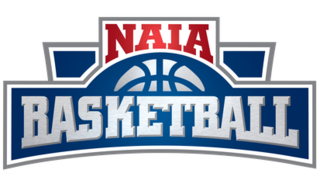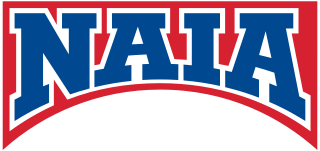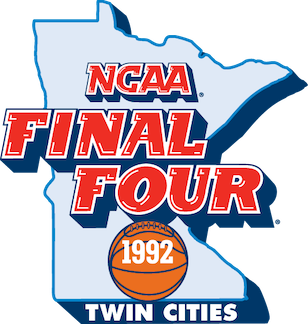
The National Association of Intercollegiate Athletics (NAIA) established in 1940, is a college athletics association for colleges and universities in North America. Most colleges and universities in the NAIA offer athletic scholarships to their student athletes. For the 2023-24 season, it had 241 member institutions, of which two are in British Columbia, one in the U.S. Virgin Islands, and the rest in the continental United States, with over 83,000 student-athletes participating. The NAIA, whose headquarters is in Kansas City, Missouri, sponsors 28 national championships. CBS Sports Network, formerly called CSTV, serves as the national media outlet for the NAIA. In 2014, ESPNU began carrying the NAIA Football National Championship.

The National Association of Intercollegiate Athletics men's basketball national championship has been held annually since 1937. The tournament was established by James Naismith to crown a national champion for smaller colleges and universities. Through the 2019–20 season, the NAIA Tournament featured 32 teams, and the entire tournament was contested at one location in one week, rather than multiple locations over a series of weekends. Beginning with the 2021 edition, the tournament expanded to 48 teams, starting with play at 16 regional sites, with only the winners at these sites playing at the final venue. The 2022 tournament expanded again to 64 teams. From 1992 to 2020, the NAIA sponsored a Division II championship. The Division I tournament is played in Kansas City, Missouri, while in 2020, the Division II tournament was to be held for the last time at the Sanford Pentagon in Sioux Falls, South Dakota; however, the tournaments were called off due to the COVID-19 pandemic. The NAIA returned to a one-division setup in 2021. The NAIA games can be watched online through the official NAIA provider StretchInternet.

The National Association of Intercollegiate Athletics Women's Basketball national championship has been held annually since 1981. The NAIA Women's Tournament was established one year before the NCAA Women's Basketball tournament. It was created to crown a women's national title for smaller colleges and universities. From 1992 to 2020, the NAIA sponsored a women's division II championship tournament. The entire tournament is played in Sioux City, Iowa. Prior to the merger of D-I and D-II, a separate Division I tournament was held in Billings, Montana, while the Division II tournament was in Sioux City. Contracts for host cities for both divisions initially expired in 2017. Following renewals, the 2018 and 2019 tournaments were held in the same cities, but in 2020, the tournaments were called off due to the COVID-19 outbreak.

The NCAA Division III men's basketball tournament is a tournament to determine the NCAA Division III national champion. It has been held annually from 1975 to 2019 & since 2022, but not played in 2020 and 2021 due to COVID-19 issues.

In United States colleges, top-tier basketball is governed by collegiate athletic bodies including National Collegiate Athletic Association (NCAA), the National Association of Intercollegiate Athletics (NAIA), the United States Collegiate Athletic Association (USCAA), the National Junior College Athletic Association (NJCAA), and the National Christian College Athletic Association (NCCAA). Each of these various organizations is subdivided into one to three divisions, based on the number and level of scholarships that may be provided to the athletes. Teams with more experience tend to win over teams with more talent and less experience.

The 1992 NCAA Division I men's basketball tournament involved 64 schools playing in single-elimination play to determine the national champion of men's NCAA Division I college basketball. It began on March 19, 1992, and ended with the championship game on April 6 in Minneapolis. A total of 63 games were played.
The 2004 Buffalo Funds - NAIA Men's Division I Basketball Tournament was held in March at Municipal Auditorium in Kansas City, Missouri. This was the 67th annual NAIA DI basketball tournament and featured 32 teams playing in a single-elimination format. This was the third year the tournament was held in Kansas City. The 2004 NAIA national championship game featured the #1 ranked Cougars of Mountain State and the #6 ranked Eagles of Concordia University (CA). This match up was a repeat of the 2003 tournament. The Cougars defeated the Eagles 74–70. The other teams that rounded out the NAIA national semifinals were Georgetown College (KY) and University of Mobile, respectively.
The 2002 Buffalo Funds - NAIA Division I men's basketball tournament was held in March at Municipal Auditorium in Kansas City, Missouri. This was the first NAIA tournament back in Kansas City since 1993. The NAIA headquarters also relocated to Olathe, Kansas this year. The 65th annual NAIA basketball tournament featured 32 teams playing in a single-elimination format. The 2002 champion was 2001's runner-up, University of Science and Arts of Oklahoma. The Drovers faced Sooner Athletic Conference rival Oklahoma Baptist University in the championship game. It was the first time two teams from the Sooner Athletic Conference ever met in the national championship game. And the first SAC team to win the tournament since Oklahoma City University won in 1996. The Drovers rolled over the Bison 96–79. Finishing out the NAIA Semifinals were Azusa Pacific University and Barat College.
The 2013 National Invitation Tournament was a single-elimination tournament of 32 NCAA Division I teams that were not selected to participate in the 2013 NCAA tournament. The annual tournament began on March 19 on campus sites and ended on April 4 at Madison Square Garden. Baylor defeated Iowa, 74–54, to capture the Bears its first NIT title in school history.
The 2014 National Invitation Tournament was a single-elimination tournament of 32 NCAA Division I teams that were not selected to participate in the 2014 NCAA tournament. The annual tournament started on campus sites for the first 3 rounds, with the Final 4 and Championship game being held at Madison Square Garden in New York City. The tournament began on Tuesday, March 18 and ended on Thursday, April 3. Minnesota won this tournament after being the 3rd Big Ten team in a row to make the NIT Finals.
The 2015 National Invitation Tournament was a single-elimination tournament of 32 NCAA Division I teams that were not selected to participate in the 2015 NCAA tournament. The annual tournament is being played on campus sites for the first three rounds, with the Final Four and Championship game being held at Madison Square Garden in New York City. The tournament began on Tuesday, March 17 and ended on Thursday, April 2. On February 6, the NCAA announced the 2015 NIT will use a 30-second shot clock and a 4-foot restricted-area arc as experimental rules for the 2015 tournament. On March 4, the NCAA announced teams that are marked as the first four teams left out of the 2015 NCAA tournament field will be the top-seeded teams in the 2015 NIT.
The 2016 National Invitation Tournament was a single-elimination tournament of 32 NCAA Division I teams that were not selected to participate in the 2016 NCAA tournament. The annual tournament was played on campus sites for the first three rounds, with the Final Four and championship game being held at Madison Square Garden in New York City. The tournament began on Tuesday, March 15 and ended on Thursday, March 31. An experimental rule allowing players six personal fouls instead of five was approved for use in all national postseason tournaments except for the NCAA Tournament. The NIT Selection Show aired at 8:30 PM EDT on Sunday, March 13, 2016 on ESPNU. George Washington were the champions over Valparaiso 76–60. The Colonials victory was their first-ever NIT title.

The NAIA Division II women's basketball championship is the former tournament held by the NAIA to determine the national champion of women's college basketball among its Division II members in the United States and Canada.

The 1989 NAIA women's basketball tournament was the ninth annual tournament held by the NAIA to determine the national champion of women's college basketball among its members in the United States and Canada.

The 1992 NAIA Division I women's basketball tournament was the 12th annual tournament held by the NAIA to determine the national champion of women's college basketball among its members in the United States and Canada and the first held exclusively for the programs in its newly established Division I.

The 1992 NAIA Division I women's basketball tournament was the tournament held by the NAIA to determine the national champion of women's college basketball among its Division II members in the United States and Canada for the 1991–92 basketball season.

The 1992 NAIA Division II men's basketball tournament was the tournament held by the NAIA to determine the national champion of men's college basketball among its Division II members in the United States and Canada for the 1991–92 basketball season.

The 1993 NAIA Division II men's basketball tournament was the tournament held by the NAIA to determine the national champion of men's college basketball among its Division II members in the United States and Canada for the 1992–93 basketball season.

The 2018 NAIA Division I women's basketball tournament was the tournament held by the NAIA to determine the national champion of women's college basketball among its Division I members in the United States and Canada for the 2017–18 basketball season.
The 2022 NAIA Division II men's basketball tournament was due to be the tournament held by the NAIA to determine the national champion of men's college basketball among its Division I members in the United States and Canada for the 2019–20 basketball season.






